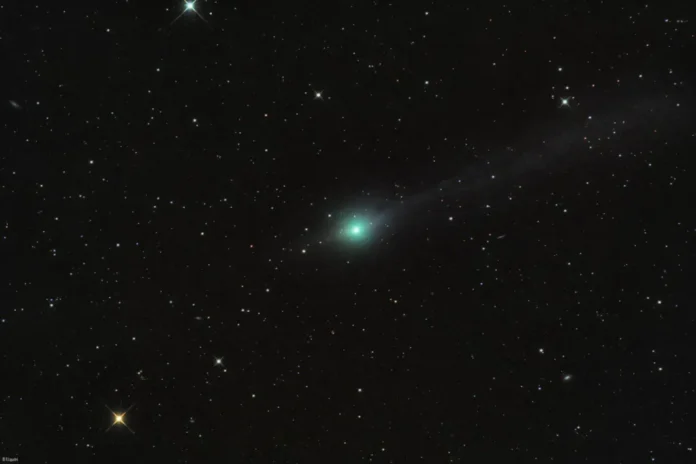Key Takeaways
- An ancient wanderer from beyond our solar system adjusts its path with uncanny accuracy.
- Scientists spot a fine-tuned anomaly hinting at purpose over accident.
- What if this comet carries secrets older than Earth itself?
By Samuel Lopez
USA Herald – Harvard astrophysicist Avi Loeb has spotlighted a stunning coincidence in the path of 3I/ATLAS, an interstellar object discovered racing through our solar system. In his latest Medium post, Loeb breaks down complex orbital math to reveal how this object appears to have made a precise “course correction” to skim exactly at the edge of Jupiter’s gravitational pull—known as the Hill radius.
For everyday readers, think of the Hill radius as Jupiter’s personal bubble, about 53.5 million kilometers wide, where the giant planet’s gravity dominates over the Sun’s. Without this bubble, any slow-moving items dropped off by 3I/ATLAS would drift away into space.
“Let us suppose, hypothetically, that the interstellar object 3I/ATLAS is a mothership that was designed to seed Jupiter with technological devices.” Avi Loeb
Loeb’s analysis, backed by data from NASA’s JPL Horizons system and over 230 observatories, shows 3I/ATLAS will brush Jupiter at a minimum distance of 53.445 million kilometers on March 16, 2026—matching the Hill radius within a razor-thin margin of error (just 0.06 million kilometers).
This isn’t luck; it’s a one-in-26,000 shot across Jupiter’s vast orbital path. The key twist? During its closest swing by the Sun (perihelion), 3I/ATLAS showed unexpected non-gravitational acceleration—a push not explained by typical comet outgassing. This subtle shove, measured at 5×10^{-7} astronomical units per day squared, shifted its trajectory by about 0.1 million kilometers, perfectly aligning it with Jupiter’s Hill edge.
“In other words, the non-gravitational acceleration introduced a small course correction of exactly the magnitude needed to bring the minimum distance of 3I/ATLAS from Jupiter to the value of Jupiter’s Hill radius. 3I/ATLAS would have missed the edge of the Hill sphere otherwise. This suggests that the level of non-gravitational acceleration was finely tuned to result in min{D}=H and bring 3I/ATLAS exactly to the radius of Jupiter’s gravitational influence.” Loeb
Loeb then leaves us with a final thought:
“We therefore do not know whether it just maneuvered slightly to satisfy min{D}=H or also released technological devices near perihelion.” Avi Loeb, Harvard astrophysicist, in his Medium post.
Loeb speculates this could indicate technological intervention, like thrusters on a “mothership” fine-tuning its approach to deploy devices into Jupiter’s orbit. Multiple jets seen in post-perihelion images support this idea, as does the timing—perihelion offered a solar gravity boost for maneuvers, hidden from Earth telescopes behind the Sun.
But while Loeb imagines alien tech deliveries, a more ground-based view emerges: What if 3I/ATLAS is “intelligent” through its very makeup? Comets like this carry primordial materials—minerals, gases, and compounds billions of years old—that could hold natural “super-intelligence” in ways we’re just beginning to grasp.
Consider a July 15, 2025, breakthrough from the University of Chicago, detailed in an article by Paul Dailing. Researchers there crammed terabytes of data into tiny crystal structures by exploiting atomic gaps, creating quantum-inspired memory denser than anything before.
If human-engineered rocks can store vast information, imagine what interstellar comets—forged in the universe’s earliest fires—might encode. 3I/ATLAS could be a cosmic library, its elements naturally processing or retaining data from eons of travel, potentially revolutionizing our understanding of materials science and origins of life.
As more interstellar objects visit (and they will), their “intelligence” might not need occupants; it could lie in the raw stuff of stars. This anomaly pushes us to watch closely—could Juno or future Jupiter probes spot new orbiters we didn’t launch, as Loeb speculates?
As astronomers gather more data on 3I/ATLAS’s approach, stay tuned to USA Herald for updates on this interstellar enigma. ☄️



